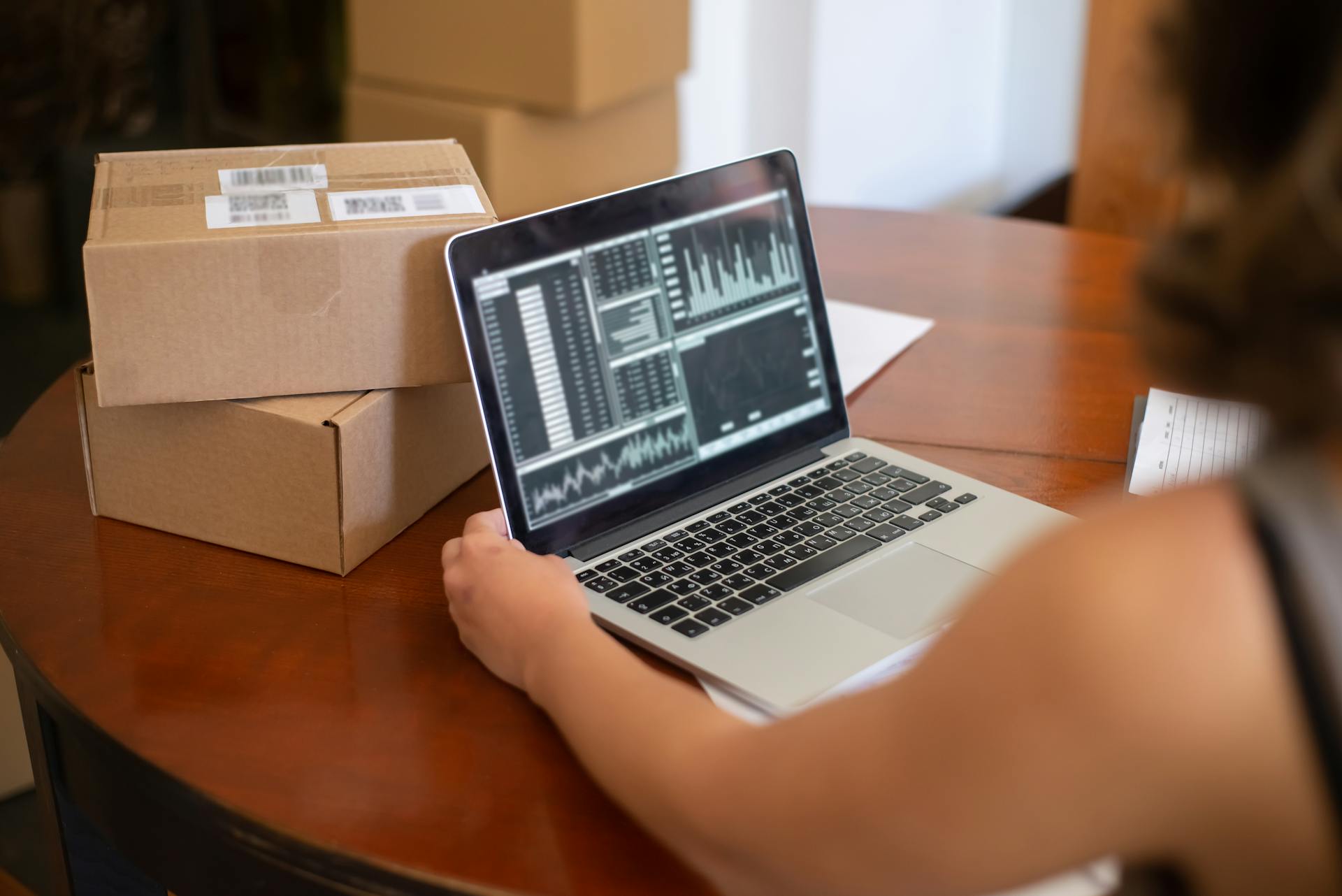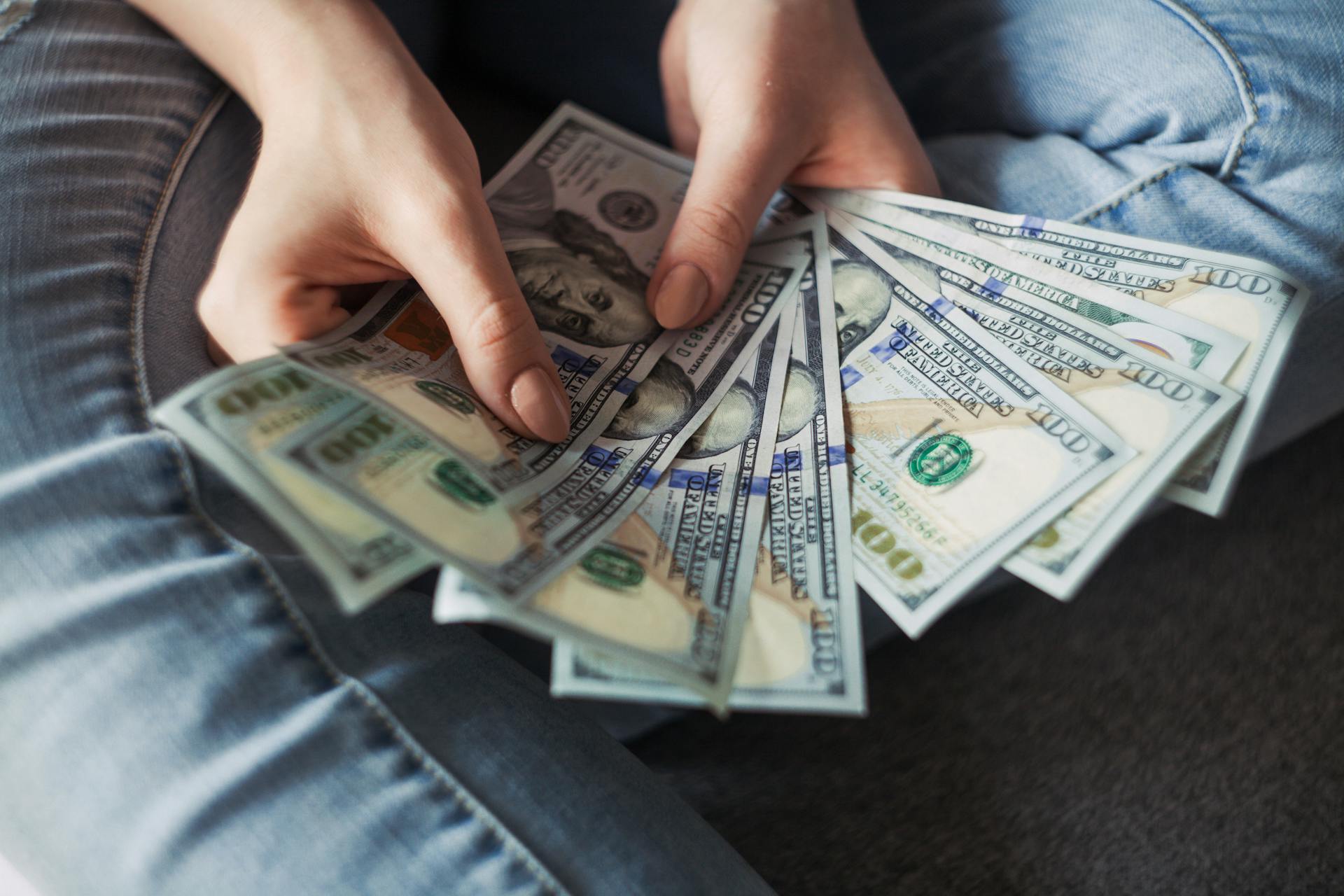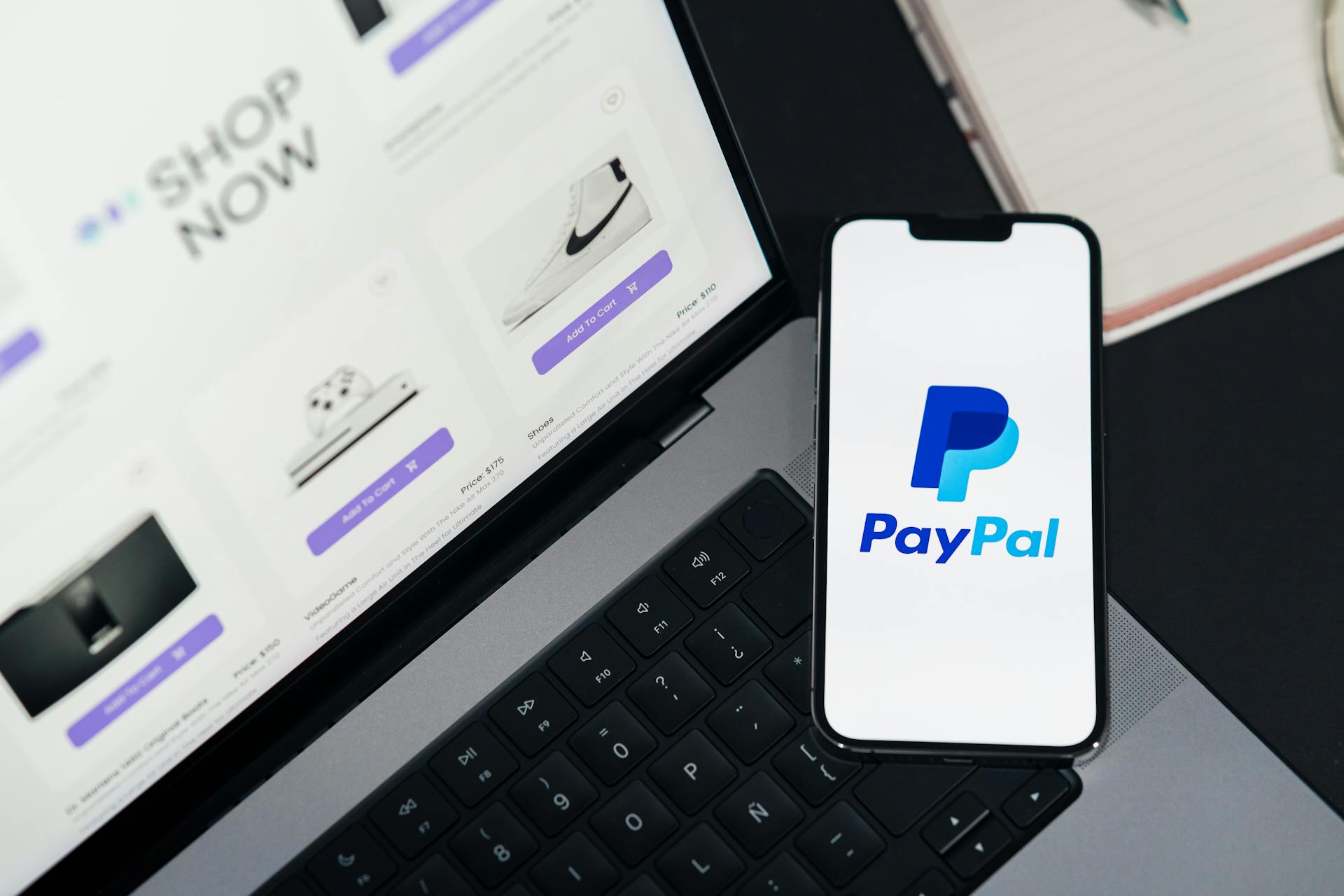
PayPal's business model is built on facilitating online transactions, and it makes money by taking a small percentage of every transaction that flows through its system. This fee can range from 2.9% + $0.30 per transaction for domestic transactions to 4.4% + a fixed fee for international transactions.
PayPal earns revenue through transaction fees, which are charged to both buyers and sellers. For sellers, these fees can add up quickly, especially for high-volume businesses.
PayPal also earns interest on the funds held in user accounts, known as the "holdback" period. This can last anywhere from 30 to 120 days, depending on the type of transaction.
PayPal's fees are competitive, but they can be higher than some other payment processors. However, PayPal's convenience and widespread acceptance make it a popular choice for many users.
Additional reading: Shopify Currency Conversion Fee
PayPal's Business Model
PayPal is a two-sided business model that makes money from both merchants and consumers. It's a unique setup that allows them to generate revenue from multiple sources.
PayPal generates revenue from merchants primarily by charging fees for completing their payment transactions and other payment-related services. This is a significant source of income for the company.
The company makes money from consumers on fees charged for foreign currency conversion, instant transfers from their PayPal or Venmo account to their debit card or bank account, to facilitate the purchase and sale of cryptocurrencies, interest, fees, or other revenue from credit product programs, and other miscellaneous fees.
In 2023, PayPal processed $1.53 trillion of Total Payments Value (TPV), which is a key metric for the company. This massive volume of transactions directly impacts growth in TPV.
PayPal classifies its revenue into two categories: Transaction revenues and Revenues from other value-added services. Transaction revenues are primarily charged to merchants on a transaction basis based on the TPV completed.
Discover more: Pay Pal Merchant Services
Revenue Streams
PayPal makes money through various revenue streams, including fees for cross-border transactions.
PayPal Business users pay fees for accepting payments through PayPal.
A PayPal user with a consumer account incurs a currency conversion fee and an international transaction fee for a cross-border purchase, making PayPal's fees a significant source of revenue.
On a similar theme: Paypal Wins Lawsuit against Cfpb's Fee Disclosures for Digital Wallets
P2P Payment Withdrawal
PayPal.me charges a withdrawal fee in the USA, which is 2.9% plus $0.30 USD of the amount received.
This fee applies when you withdraw money received through a custom link.
International Payments
International payments can be a bit tricky, especially when it comes to fees. PayPal charges fees when you receive payment from a different country.
These charges include a currency conversion cost if a different currency is used, and an international payment fee. Fees vary for different currencies.
PayPal Business users pay fees for accepting payments through PayPal, while consumer account holders incur a currency conversion fee and an international transaction fee for cross-border purchases.
Intriguing read: Amazon Currency Converter
Fees and Charges
PayPal charges fees for various services, including currency conversions, international transactions, and instant transfers. These fees can add up quickly, especially for merchants who accept online payments.
For consumers, PayPal charges fees for transactions such as paying with a credit or debit card, making international payments, and instant transfers. Additionally, users who withdraw money using a debit card are charged a fee.
Here's an interesting read: Pay Pal Debit
Here are some specific fees to keep in mind:
Merchants also face fees, including a 2.9% + $0.30 USD fee per transaction, as well as a fixed fee for using PayPal Working Capital.
Are There Fees?
PayPal charges fees for various services, including international payments and currency conversions.
Fees for consumers include a currency conversion fee and an international transaction fee for cross-border purchases. Additionally, consumers pay fees for paying using cards and not the PayPal wallet, and for instant transfers to bank accounts.
PayPal charges a fee of 2.9% plus $0.30 USD for business accounts on the amount they receive on the sale. However, this fee is reduced with an increased amount.
International payments incur fees, including currency conversion costs and international payment fees. Fees vary for different currencies.
Here's a breakdown of some fees associated with PayPal:
It's worth noting that some services, like making a withdrawal from your PayPal account to your personal bank account, are free.
If this caught your attention, see: How to Get Pay Pal Account
Debit Card Withdrawal

Debit Card Withdrawal can be a convenient option, but be aware that PayPal charges a fee for every withdrawal made using a debit card.
This fee is essentially a cost of using the service, and it's something to consider when transferring money.
PayPal users get the benefit of anytime money, but this comes at a price, as mentioned earlier.
Other Sources of Income
PayPal's revenue comes from a variety of sources beyond just transactions.
The company owns several other businesses, including Braintree, Xoom, and Venmo, which contribute to its overall revenue.
These subsidiaries offer different services and products, generating additional income for PayPal.
In fact, PayPal's ownership of Venmo is particularly noteworthy, as it allows the company to charge customers for features like credit cards, instant transfers, and payroll check cashing.
Venmo also generates revenue from fees charged to customers when they withdraw money from their account.
PayPal's business model is diverse, with multiple revenue streams that help drive its growth and success.
For more insights, see: Venmo Pay in 4 Amazon
How PayPal Makes Money
PayPal makes money through various revenue streams, including collecting transactions fees, subscription fees for premium features, and the sale of card readers.
One of the primary sources of revenue for PayPal is transaction fees, which are collected on every payment made through the platform.
PayPal also earns revenue from subscription fees for premium features offered to businesses, such as access to virtual terminals and logistics support.
In addition to these fees, PayPal also generates revenue from the sale of card readers and business loans.
Here's a breakdown of PayPal's revenue streams:
Payflow
Payflow is a payment gateway service provided by PayPal, allowing merchants to integrate payment processing into their websites using a merchant account.
You can choose between two plans: Payflow Link, which is free, and Payflow Pro, which costs $25 per month and gives you more control over the checkout page.
Payflow Link is a great option for those who want a hassle-free experience, as customers enter their payment details on a page hosted by PayPal.
Payflow Pro, on the other hand, offers more customization options, but comes with a higher price tag.
No matter which plan you choose, PayPal charges a $0.10 gateway fee for credit card payments.
Some of the benefits of using Payflow include fraud protection, recurring billing, and buyer authentication.
Explore further: Is Pay Pal Free
They Earn Money?
PayPal has numerous revenue streams from both individual consumers and merchants. One of the main ways they earn money is by collecting transactions fees, which can add up quickly.
PayPal also earns revenue from subscription fees for premium features offered to businesses. This can include features like access to virtual terminals and logistics support.
In addition to these fees, PayPal makes money from the sale of card readers and business loans. They also earn referral fees on cashback rewards and interchange fees.
PayPal's revenue streams are diverse, and the company has a strong presence in the digital money market. By understanding how they earn money, you can better appreciate the value they provide to both consumers and merchants.
Here are some of the ways PayPal earns money:
- Transaction fees
- Subscription fees for premium features
- Sale of card readers
- Business loans
- Referral fees on cashback rewards
- Interchange fees
PayPal's revenue sources can be broken down into two main categories: transaction revenue and revenue from other value-added services. Most of the company's money comes from transactions, but they also earn significant revenue from other sources.
PayPal owns several other companies, including Braintree, Xoom, and Venmo, which add to their revenue streams. These companies provide additional services and features that contribute to PayPal's overall revenue.
See what others are reading: How Does Bnpl Make Money
Financials and Trends
PayPal's financials are a testament to its growing success. The company posted a net income of $4.25 billion in 2023, a 76% increase over the previous year.
Revenue rose 8% year-over-year to $29.8 billion in 2023. This significant growth is a result of PayPal's expanding user base and increasing payment volume.
PayPal processed $1.53 trillion in total payment volume in 2023, a staggering number that highlights the company's dominance in the digital payment space.
A different take: Amazon Is a Growth Company with a Long-term Outlook
Stock Repurchase Increasing
PayPal's Free Cash Flow has gone up 9% Year on Year, indicating their business is getting optimized to give out more cash despite increasing scale.
This is good news, but it also raises some concerns. Ideally, when free cash flow increases, companies tend to diversify their assets, which can include acquiring other companies, investing in research and development, or paying shareholders back through dividend payouts or stock repurchases.
PayPal has been repurchasing stocks the last 2 years, a lot.
Take a look at this: Shopify Cash Advance
Trend Identification
PayPal's massive user base of over 408 million users generates a staggering amount of data, with each user averaging 45+ transactions. This rich data is then fed back to identify what consumers and merchants want before they can vocalise it.
Their collaborative approach with regulators has provided a transparent mechanism for demonstrating the trends their data is projecting.
PayPal's data-driven approach has led to the launch of 8 new products by the last quarter of 2021 alone, with more in the pipeline.
History and Risks
PayPal has a long history dating back to 1998, when it was founded by Peter Thiel and Max Levchin. It was initially an online payment service that allowed users to send and receive money electronically.
The company's early success was largely due to its ease of use and the fact that it was free to open an account. This made it an attractive alternative to traditional payment methods like checks and money orders.
In 2002, PayPal was acquired by eBay for $1.5 billion, marking a significant milestone in its history. This acquisition helped PayPal expand its user base and increase its revenue.
However, PayPal's rapid growth also brought new risks, including the risk of cyber attacks and identity theft. In 2017, PayPal reported that it had suffered a data breach, exposing the sensitive information of over 1.6 million customers.
History of
The history of something is often a story of growth and transformation, and that's certainly true for the topic at hand. The concept of risk has been around for centuries, with ancient civilizations recognizing the importance of managing uncertainty.
One of the earliest recorded examples of risk management comes from ancient Mesopotamia, around 2000 BCE. The Code of Hammurabi, a set of laws that governed trade and commerce, included provisions for mitigating risk.
Risk has been a part of human experience ever since. In the 16th century, European explorers faced numerous risks on their voyages, including the risk of shipwreck and disease. Many of these risks were unforeseen, but they had a significant impact on the course of history.
Recommended read: Pay Pal History
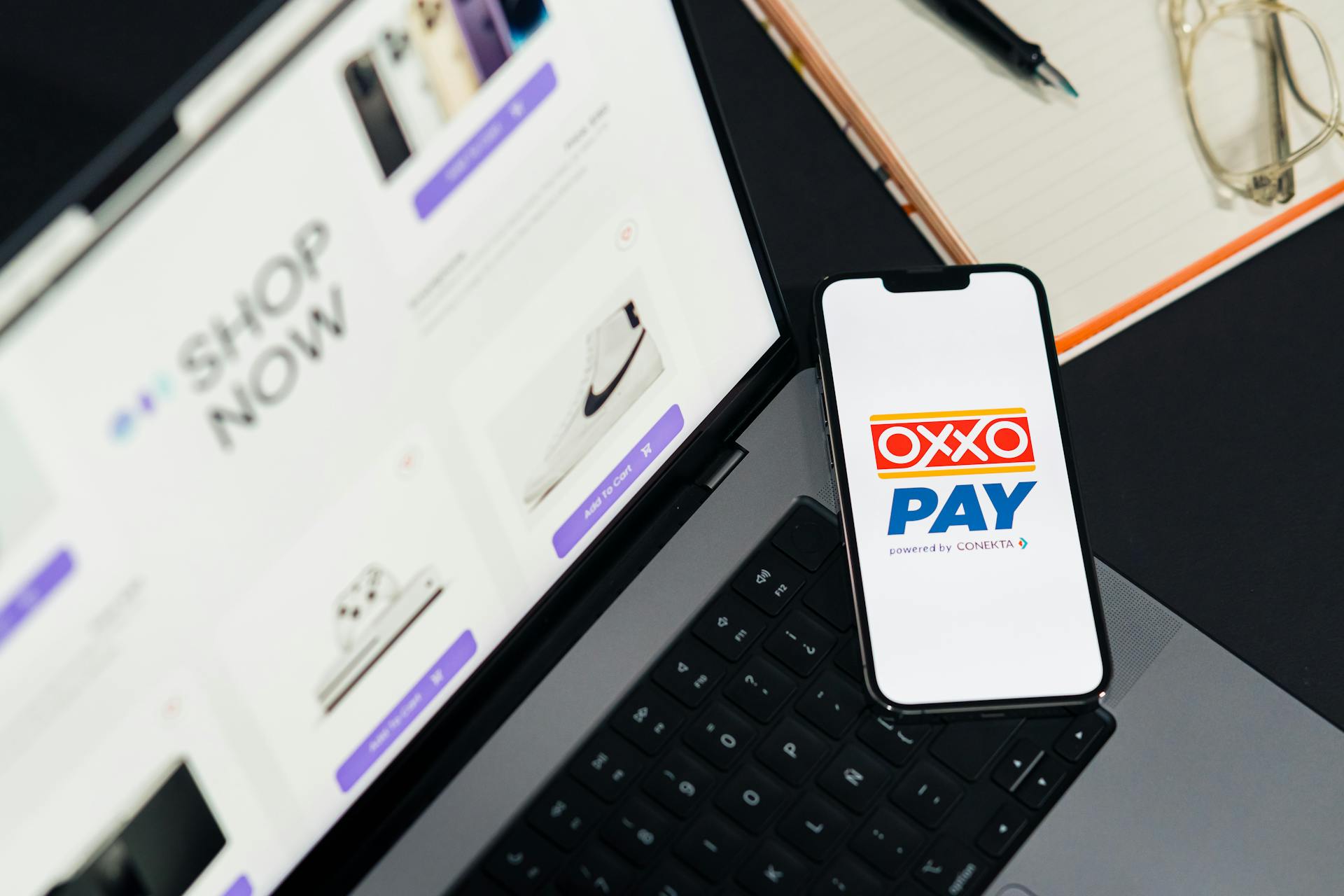
The concept of risk has evolved significantly over time, with the development of modern probability theory in the 17th century. This led to a greater understanding of the mathematical aspects of risk and the importance of statistical analysis.
The modern concept of risk management emerged in the 20th century, with the creation of formal risk assessment frameworks and methodologies. These tools have become essential for organizations and individuals looking to manage risk in a systematic and effective way.
Risk is a natural part of life, and it's essential to acknowledge and address it head-on. By understanding the history of risk and its evolution, we can better appreciate the complexities of managing uncertainty.
What Are the Risks to?
The history of nuclear power is a complex and multifaceted one, with risks that have been a concern for decades.
One major risk is nuclear accidents, which can have devastating consequences for the environment and human health. In 1986, the Chernobyl disaster released radioactive materials into the atmosphere, contaminating a large area and affecting millions of people.
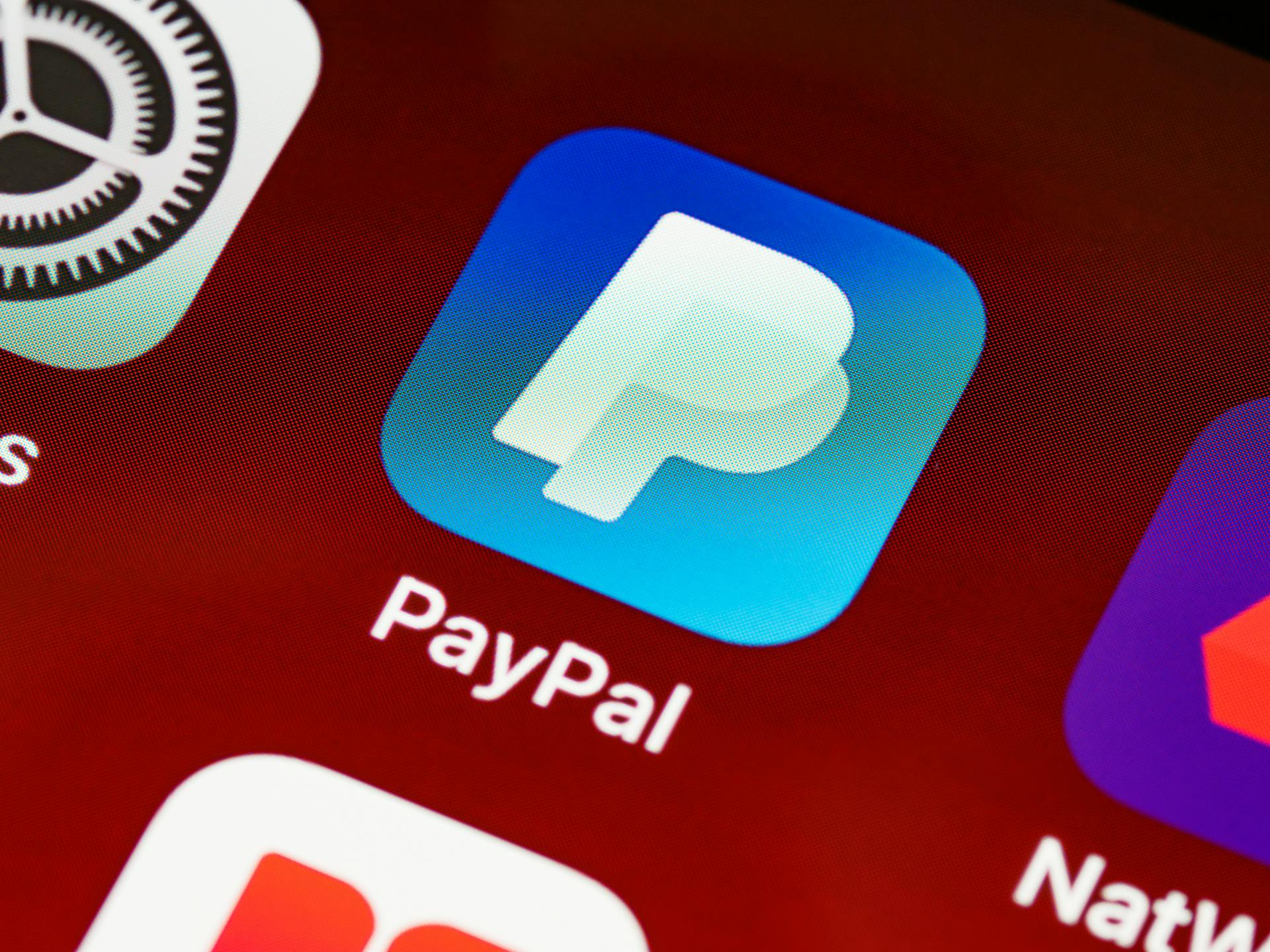
The risk of nuclear accidents is not limited to catastrophic events like Chernobyl. Smaller incidents can also occur, such as the 2011 Fukushima Daiichi nuclear disaster, which was triggered by a tsunami.
Radioactive waste is another significant risk associated with nuclear power. The production of nuclear waste is a byproduct of nuclear fission, and it remains hazardous for thousands of years.
The storage and disposal of nuclear waste pose significant challenges, including the risk of leakage and contamination. In the United States, for example, there are over 90,000 tons of nuclear waste stored at nuclear power plants.
Nuclear proliferation is also a risk associated with nuclear power. The availability of nuclear materials and technology can make it easier for countries to develop nuclear weapons.
Sources
- https://www.investopedia.com/how-paypal-makes-money-5094794
- https://www.linkedin.com/pulse/paypal-business-model-how-does-make-money-kamalika-poddar
- https://wise.com/us/blog/how-does-paypal-make-money
- https://thestrategystory.com/2023/01/11/how-does-paypal-make-money-business-model/
- https://www.feedough.com/how-does-paypal-make-money/
Featured Images: pexels.com

